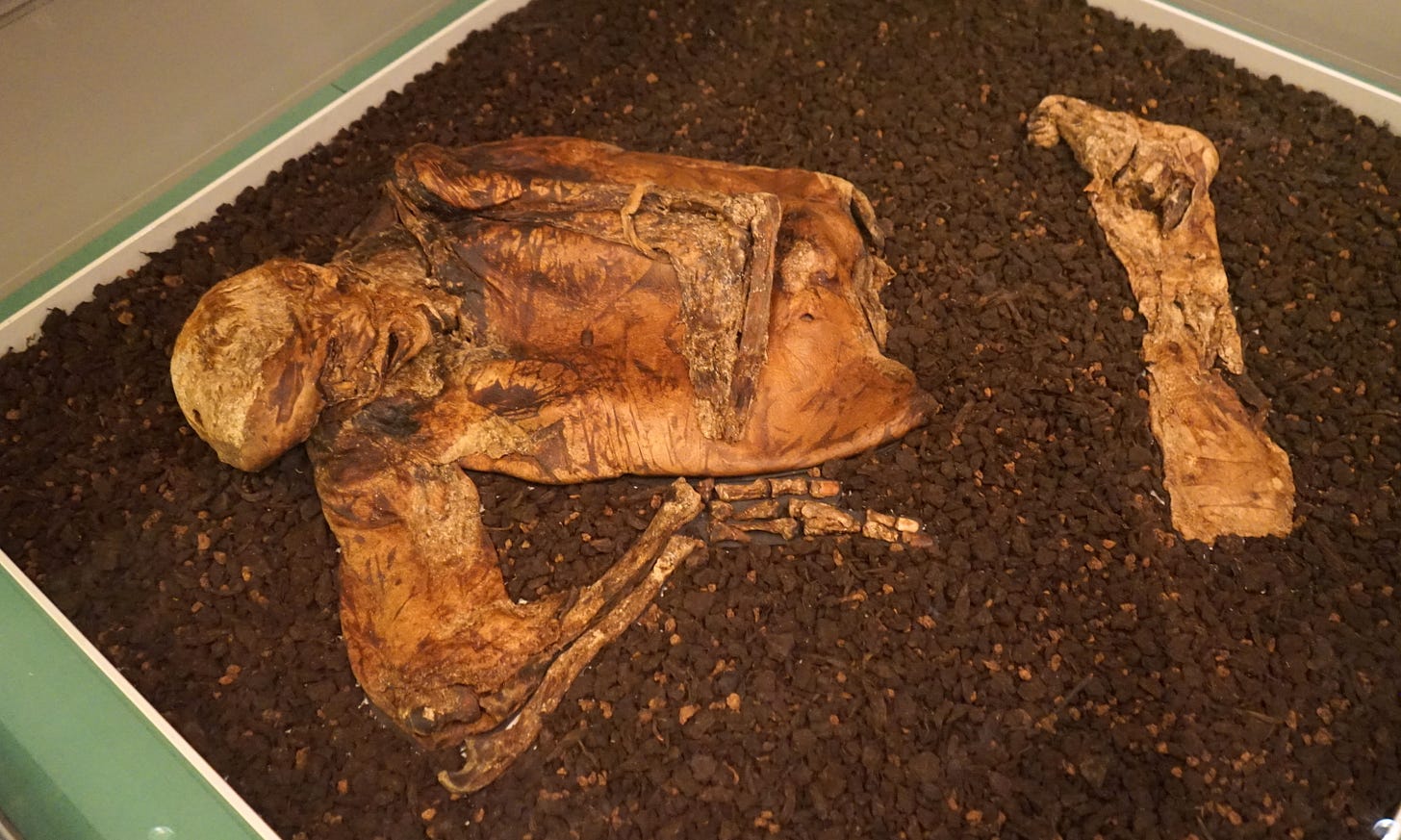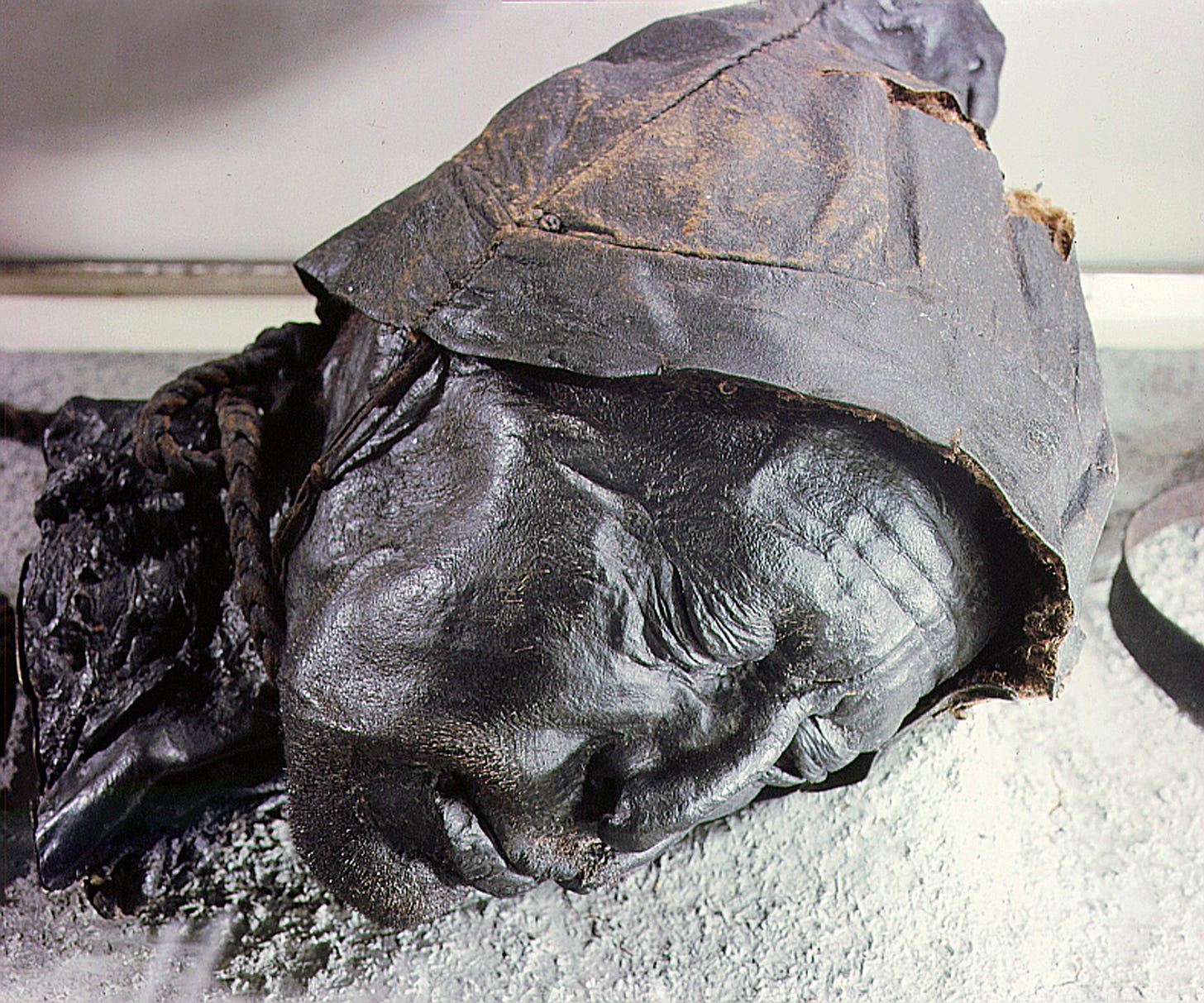By Dani Cole
There might be boggarts at the Whitworth Cafe. In the short space of time I’ve been seated, a glass salt shaker explodes into a thousand pieces after being knocked off a table and the water dispenser cascades in a waterfall onto the floor. Whitworth Park once had a lake, and boggarts — the mischievous spirits who wreak havoc in homes and farms — have long haunted Manchester’s watery places and the dark mires beyond.
Dr Melanie Giles, who I’ve met for coffee, tells me that in the 19th century, there were “boggart seers” in Manchester, who could be called to deal with these supernatural creatures. “If you had a problem, rather like an exorcism, you called the boggart seer,” she says. Boggarts, as hinted by their name, lurked in the bogs, but they’ve become somewhat domesticated over the years. “When you go back a little bit further [in time], they’re much nastier and they’re terrifying,” she says. It makes sense: bogs were places of death, mystery and danger — Ashton Moss was known as the ‘far-end-of-th’world’.
The subject of bogs is one that Giles, a senior lecturer in Archaeology at the University of Manchester, is very familiar with. She’s the author of Bog Bodies: Face to face with the Past, which is the culmination of years of research and which recently won Book of the Year at the Current Archaeology Awards. It’s a comprehensive look at the stories of bog people, melding the poetics of folklore and death with the hard edge of modern forensic science. It’s filled with rich historic accounts of bog people discoveries, including some in Manchester and Cheshire.
Bog Bodies pays tribute to her parents: her father Chris studied at the University of Manchester — economics, but with a dash of anthropology. He’d dug at archaeological sites in Windsor as a university student and she says his enthusiasm rubbed off on her. In the opening pages, there is a beautiful watercolour of Ashton Moss by Giles’ mother Jean, who grew up there, and remembered the “pallid stems of celery” that were once grown in fertile allotments and were “unparalleled in taste”. Ashton Moss would give up its own bog body in the mid 1800s, the Ashton Man. “I feel like in writing this book, I'm revisiting her connection with that landscape, and my father’s interest in archaeology,” she tells me. “In that sense, Manchester is the only place it could have been written.”
Giles was born in Glossop, and grew up near Hambledon Hill fort in Dorset, an Iron Age (800 BCE to the Roman invasion of 43 AD) settlement. The hill is a gentle shoulder that sits atop chalky grassland. As a child, she explored the site and found sling stones and bits of pottery, where rabbits had burrowed into the earth. She remembers she could see the fingerprints of the people who made the pottery, like ghosts in the clay. “I just wanted to find out about their lives,” she says. “I wanted to be able to tell stories about them.”
She started digging when she was about 17, her first dig was at Suddern Farm in Hampshire in 1992. In that region, Iron Age people typically exposed their dead to the elements. After decay, the bones were gathered up and placed in storage pits as offerings to the gods. “Semi articulated limbs, bones together, heads in pits,” she explains.
‘It will bear neither horse nor man’
Historic accounts depict bogs as treacherous places. In Daniel Defoe’s 1738 survey of Lancashire, Chat Moss in Wigan is “indeed frightful to think of, for it will bear neither horse nor man”. As well as boggarts, travellers also had to be wary of will-o’-the-wisps, or the ‘corpse candle’, the ghostly lights that were often sighted in bogs and marshes, and were believed to be the spirits of the dead. There are a number of theories on the cause of this phenomenon, one of which is that the flickering lights were caused by the gases of organic decay.
For Iron Age communities, bogs were extraordinary places: they were home to rich wildlife and were a source of food and fuel. They were able to store bog butter here — a yellow, waxy fat made from cow’s milk. It was a landscape that was respected and feared, and where people were returned to. Of the eight recorded bog bodies found in the UK (there could possibly be more), three are from Cheshire — including Lindow Man, discovered on Lindow Moss in 1984 — and one from Greater Manchester, Salford’s Worsley Man, (a decapitated head) found in 1958.
There are a limited number of bogs that have the perfect conditions to preserve a body, which is naturally mummified. The majority of bog bodies are found in northwest-European locations with cold climates, in countries like Denmark, Germany and the Netherlands. Raised bogs are best for preserving soft tissues — Lindow Moss is a raised peat bog, and Lindow Man is considered the best-preserved body found in Britain. Bogs are acidic and have pH levels similar to vinegar. Any cadaver that ends up in one ends up getting pickled. Another ingredient key to the bodies’ preservation is sphagnum moss — when sphagnum dies, it releases polysaccharides, a type of carbohydrate that stops bacteria from reproducing.
Many bog bodies suffered violent deaths, and there is ongoing debate about their nature. For some academics, Lindow Man’s multiple injuries point to the Celtic triple-fold death, a method used in human sacrifices. He had been struck in the back of the head and ligature marks on his neck from a sinew cord suggested garotting. On top of that, his throat was cut and he was also stabbed. His last meal was griddle cake, made from barley and there were traces of mistletoe pollen in his stomach, which has been linked to Druidic practice.
In Bog Bodies, Giles says that the quantity of mistletoe pollen found was unlikely to have acted as a hallucinogen or a poison but may have been used as medicine for intestinal cramps. Similarly, the cord around his neck has been interpreted as simply being a necklace. Others think his head injuries happened after death, perhaps in a bid to rescue him from the water, someone prodded him with a sharp stick.
Artful voyeurs: should bog bodies be displayed?
Worsley Man and Lindow Man were once displayed at Manchester Museum. Lindow Man is now held at the British Museum. In 2008-2009, he was displayed at Manchester Museum as part of their Lindow Man: A Bog Body Mystery exhibit. The Guardian reported that “sensitive” museum staff contacted a pagan and Druid priest Emma Restall Orr to contribute to the exhibition. She gave a mead horn and crow feathers and was perturbed that a human body was being shown “almost for entertainment.” I’ve never seen Lindow Man in person, but in photographs, I can make out his bleached hair and truncated torso flattened out like a leather satchel.
The display of bog bodies throws up an interesting ethical question. Should human remains be exhibited in museums? In his poem Punishment, Seamus Heaney imagines the death of a woman killed on the charge of adultery, drowned in a bog and weighed down by stones. He wrote, “I am the artful voyeur.” This sentiment of voyeurism is one that feels appropriate: in the Western world, death feels taboo, especially when we peer at it through a glass case. Upon seeing the Tollund Man — another famous bog body — in Denmark, Joshua Levine wrote in Smithsonian Magazine in 2017, “A kind of embarrassed hush came over me.”
I ask Giles if a bog body is considered an ‘artefact’. Most archaeologists would not use that word for bog bodies that were skeletonised or well-preserved, she explains. “They were once ‘you’, and our job is to tell the story of that past humanity,” she says. On displaying them, we should not shy away. “I feel one of the jobs of museums and archaeologists is to try and familiarise people with what it is to be human, which includes mortality,” she says. “We do not do death well in Britain.”
My first bog body was the Old Croghan Man at the National Museum of Ireland, a wrinkled torso complete with arms. He had no head. Visitors were given the option of whether they wanted to view him or not. In Ireland, funeral rites “very much involve the display of the dead,” she says. “It matters that you say your farewells.” Giles’s first bog body was Lindow Man at the British Museum. How did she feel? “I was curious,” she recalls. It was — and still is — the only set of human remains on display in their Iron Age gallery. “It’s a face you can look into and make out its features. For me, it was a really exciting moment.”
The enduring fascination with bog bodies lies not just in their violent deaths — but also in their timelessness. “It’s got that quality of someone, something that is defying time,” she says. When she is in the presence of a bog body, she feels “extraordinarily privileged” to have a moment of understanding, but “there’s always an unknown quality” to her understanding.
In Bog Bodies, she writes “the golden era of discovery is probably over”. Often bog bodies are discovered when people are digging for peat to burn or sell. Bogs are disappearing, drying out, and being built over. She explains that returning bog bodies to their original resting places isn’t always possible. The existing bodies that have been found offer a wealth of clues. Scientific advances such as isotype analysis and ancient DNA analysis, as well as forensic expertise, are unearthing new information about the lives and deaths of bog people.
There are the hard facts: scientists can find out what victims had to eat, and the exact, brutal methods of their death. But as Lindow Man was led over the soft, sinking ground, did he look up at the sweep of sky before the world went dark forever? Did he meet his fate with courage or fear, think of the people he would be leaving behind? There are some things we may never know.
‘Bog Bodies: Face to face with the past’ is available to download here. Published by Manchester University Press.








What a brilliant article, both in the subject matter but the sheer quality of the writing. One of those pieces that had me from the first sentence. Hauntingly beautiful language and I now need to read the book and find out more.
Really enjoyed this Dani and as you know 'my kind of article'.
I wonder if there were ever any stories/folklore surrounding Chat Moss when the Liverpool to Manchester railway was built in 1830? Were the navvies afraid to work there as the rails were laid over the drained Moss.
I have seen Lindow Man in the BM . A strange encounter to say the least and quite unlike anything I've seen before. Yes we're so used to seeing leather on furniture etc but you know it's a human and therefore unsettling .